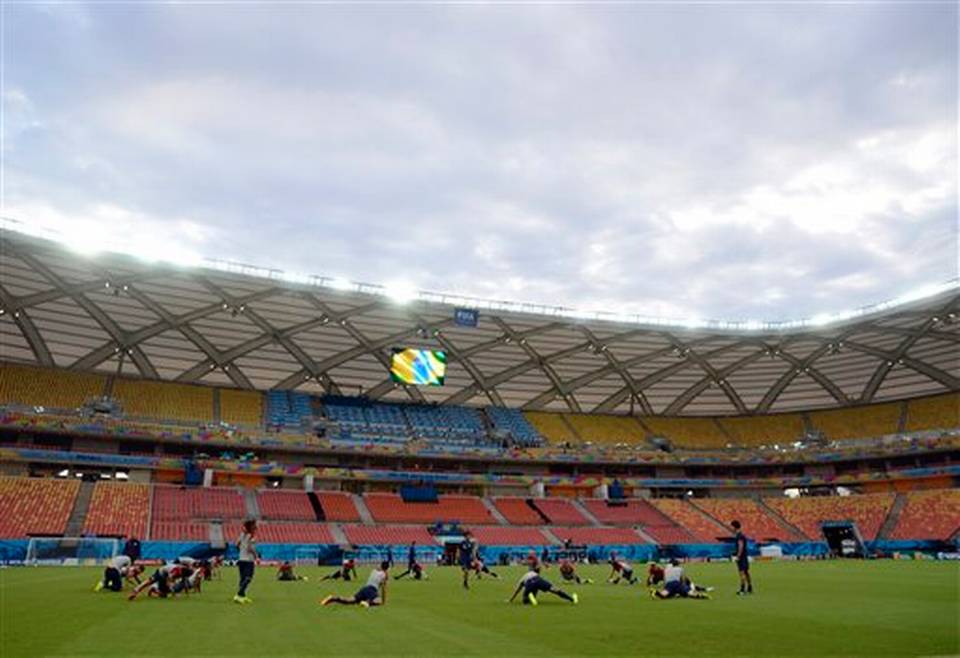A curious thing happened in the USA-Portugal match last Tuesday, played deep in the Amazon jungle in the city of Manaus. The players took a 1-minute break to drink some fluids. This was a new rule instituted by FIFA, the world’s soccer governing body, to allow players to recover during a match.

Arena Amazonia in Manaus. High temperature and humidity forced a “cooling break” during the USA v Portugal match. Photo: Paulo Duarte / AP
FIFA uses the “Wet Bulb Globe Temperature,” based on ambient temperature and humidity, to determine when “cooling breaks” should occur, and says the WGBT must be above 32°C (90°F) for breaks to be considered. The WGBT reached 89.5°F during the middle of the first half.
The World Cup is held every four years in a different country during the middle of the calendar year in June or July. The tournament has taken place in climates as varied as the cooler interior of winter in South Africa, the heart of the Mediterranean in Italy, and the warm and humid Orlando days in Florida.
Global climate change could affect when and where the tournament is held in the future, especially if it is held in the highly-populated Northern Hemisphere during the summer months. Temperature extremes have been increasing in intensity and will continue to do so in the coming decades.
Athletes on the field train for punishing conditions during daytime soccer matches—otherwise we could not have people playing in Brazil or Cameroon or Colombia! It will be the crowds that come to watch the games, the population at each of the host cities, and, critically, the workers building stadiums that might bear the brunt of extreme heat in future iterations of the tournament.
While Brazil has been warm and humid, the population is accustomed to the climate. This will not be the case when the tournament is held in Russia in 2018. Russia experienced one of the most disastrous heat waves recorded in recent times during July 2010 (over 50,000 deaths). Were that to happen in 2018, Russia would face a massive public health tragedy, as the heat would affect fans and workers in and around the tournament who are not acclimatized to hot conditions.
A cautionary tale exists. Qatar is set to host the 2022 tournament. Temperatures hover around 41°C (106°F) in the capital city of Doha, and can reach 50°C (122°F) during the summer in the Persian Gulf country. Massive air conditioning and countless other measures would need to be taken to ensure the safety of both tourists and the supporting population.
Qatar 2022 has an even clearer heat-related consequence: the death toll associated with stadium construction. Migrant workers are dying due to heat at an alarming rate.
Under some IPCC scenarios, heat extremes will make summer tournaments in northern hemisphere countries unfeasible. The World Cup will likely be moved to the winter, as has been suggested for Qatar 2022. As the world faces a changing climate largely due to human activity, traditions we take for granted – like the World Cup played in our summer – will necessarily change.

